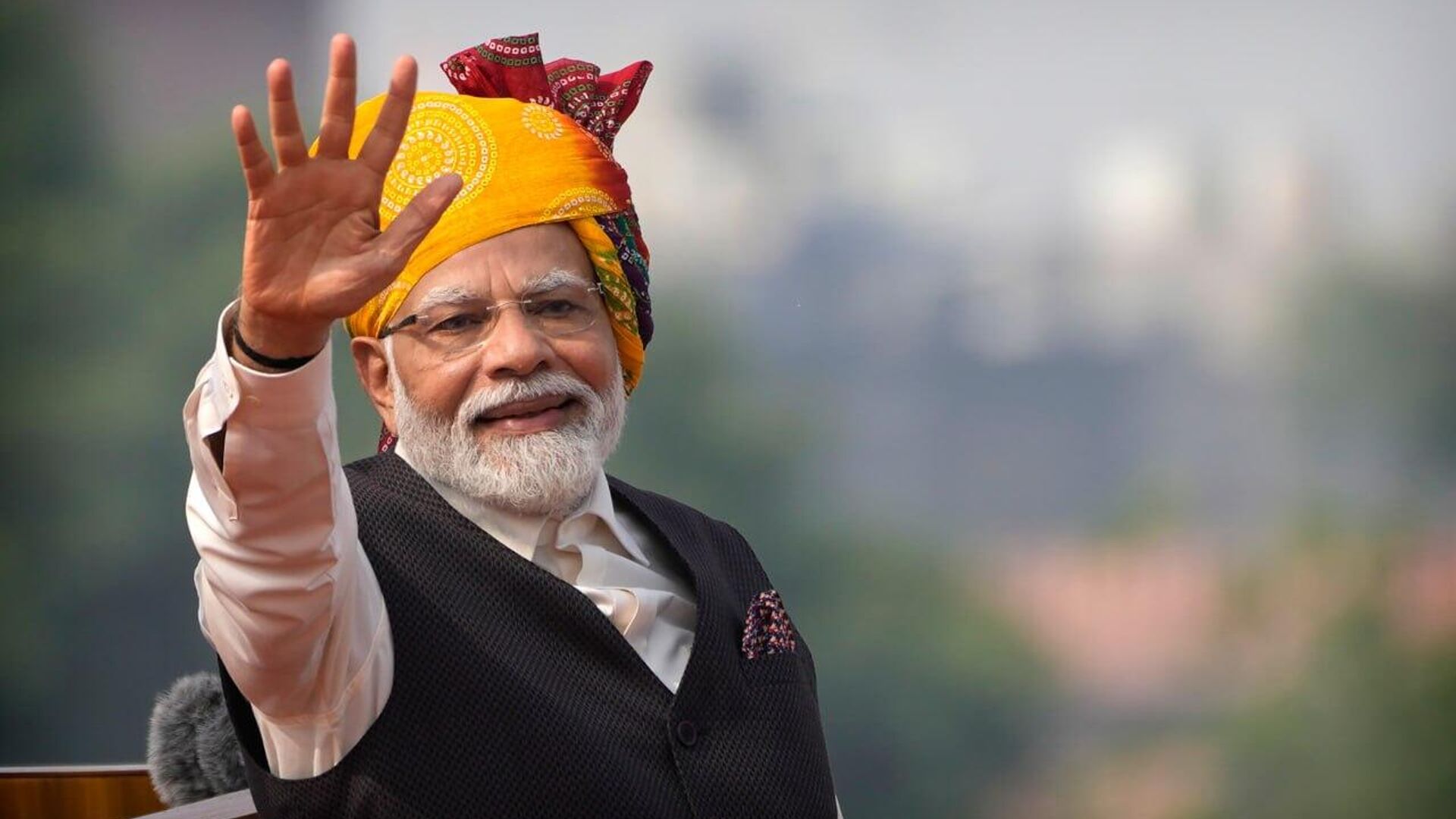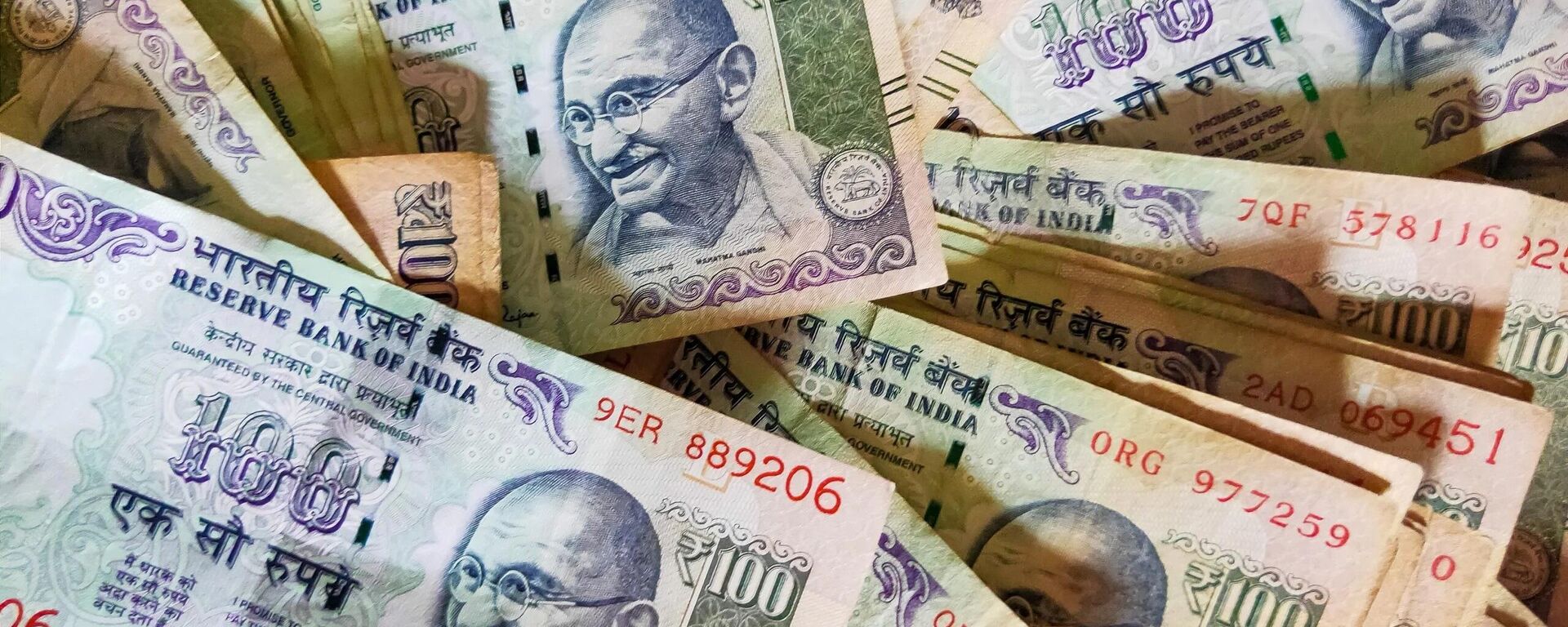https://sputniknews.in/20250329/revealing-indias-economic-success-8919495.html
Revealing India's Economic Success
Revealing India's Economic Success
Sputnik India
India's economic growth broke records in the last decade, registering an astonishing 105 percent growth from 2015 to 2025, according to the International... 29.03.2025, Sputnik India
2025-03-29T11:41+0530
2025-03-29T11:41+0530
2025-03-29T11:41+0530
business & economy
donald trump
india
us
china
reserve bank of india (rbi)
international monetary fund (imf)
gdp
indian economy
global economy
https://cdn1.img.sputniknews.in/img/07e9/03/17/8894449_0:67:1280:787_1920x0_80_0_0_b037617bd0b80fb2b6b9dbb9c3d25f72.jpg
India is expected to remain the fastest-growing economy in the world for the next decade, with investments from both the private and public sectors, combined with an aspirational middle class, driving the country's financial rise, experts have said.Notably, India is now the fifth-largest economy on the planet, trailing only the US, China, Germany, and Japan.At present, India's GDP is valued at $4.3 trillion, more than doubling from $2.1 trillion in 2015.However, the recent shift towards harsh fiscal consolidation through expenditure cuts has had adverse effects on growth. Given that consumer confidence and demand boosts take time, continued public infrastructure investment is crucial for sustained economic growth, she added.Moreover, relying solely on monetary policy, such as lowering interest rates, is not a quick fix for economic growth. The Reserve Bank of India (RBI) cannot be expected to single-handedly trigger growth. Instead, a balanced approach that combines fiscal prudence with sustained public investment in infrastructure at the central and state levels — with continued capital expenditure transfers to the states — is necessary to support India's economic growth, the academic explained.Rethinking stringent fiscal rules is inevitable if India wants robust growth, because fiscal austerity through expenditure compression for fiscal consolidation pulls down economic growth. If taxes are buoyant, it can enhance fiscal space, Chakraborty noted.While India's economic growth has been impressive, China's precedent remains historical, as it doubled its economy in the 1980s, 90s, and 2000s, with GDP growth averaging almost 10 percent over 30 years, Dr. Jayati Ghosh, Professor of Economics at the University of Massachusetts in the US, highlighted.India is now the largest country in the world by population, and in per capita terms, especially at market exchange rates, the nation's statistics remain relatively low, she pointed out.Secondly, the gains from this income growth have gone only to the top 15 percent of the population. While this represents a large market of about 210 million people, it also means that over 1.2 billion Indians are not benefiting from this economic growth, which appears to be a very serious issue, the financial expert stated.Good-quality employment is the need of the hour in India, as over 65% of its people are under 35 years old and aspire to a better quality of life. However, this does not mean that a large number of these jobs should be generated by big corporations; rather, the government should tap into small and medium enterprises, public services, and agriculture-allied units to generate employment. Hence, state policies should focus on this, Ghosh concluded.
https://sputniknews.in/20250114/how-rupees-slide-on-foreign-exchange-could-impact-indias-economy-8654505.html
india
us
china
Sputnik India
feedback.hindi@sputniknews.com
+74956456601
MIA „Rossiya Segodnya“
2025
Pawan Atri
https://cdn1.img.sputniknews.in/img/07e6/0c/13/139630_147:0:831:684_100x100_80_0_0_8fa2b25903e7787fe6a2698552c167df.png
Pawan Atri
https://cdn1.img.sputniknews.in/img/07e6/0c/13/139630_147:0:831:684_100x100_80_0_0_8fa2b25903e7787fe6a2698552c167df.png
News
en_IN
Sputnik India
feedback.hindi@sputniknews.com
+74956456601
MIA „Rossiya Segodnya“
Sputnik India
feedback.hindi@sputniknews.com
+74956456601
MIA „Rossiya Segodnya“
Pawan Atri
https://cdn1.img.sputniknews.in/img/07e6/0c/13/139630_147:0:831:684_100x100_80_0_0_8fa2b25903e7787fe6a2698552c167df.png
donald trump, india, us, china, reserve bank of india (rbi), international monetary fund (imf) , gdp, indian economy, global economy
donald trump, india, us, china, reserve bank of india (rbi), international monetary fund (imf) , gdp, indian economy, global economy
Revealing India's Economic Success
India's economic growth broke records in the last decade, registering an astonishing 105 percent growth from 2015 to 2025, according to the International Monetary Fund (IMF). Sputnik India examines what led to these stupendous figures.
India is expected to remain the fastest-growing economy in the world for the next decade, with investments from both the private and public sectors, combined with an aspirational middle class, driving the country's financial rise, experts have said.
Notably, India is now the fifth-largest economy on the planet, trailing only the US, China, Germany, and Japan.
At present, India's GDP is valued at $4.3 trillion, more
than doubling from $2.1 trillion in 2015.
"The post-pandemic growth of India has been driven by accommodative fiscal policies, characterised by relatively high deficits and debt, aimed at boosting public capital expenditure to attract private investment. Recent growth statistics have indeed confirmed that growth is investment-led," Lekha Chakraborty, an economist and professor at the National Institute of Public Finance and Policy, told Sputnik India.
However, the recent shift towards harsh fiscal consolidation through expenditure cuts has had adverse effects on growth. Given that consumer confidence and demand boosts take time, continued public infrastructure investment is crucial for sustained economic growth, she added.
Moreover, relying solely on monetary policy, such as lowering interest rates, is not a quick fix for economic growth. The Reserve Bank of India (RBI) cannot be expected to single-handedly trigger growth. Instead, a balanced approach that combines fiscal prudence with sustained public investment in infrastructure at the central and state levels — with continued capital expenditure transfers to the states — is necessary to support India's economic growth, the academic explained.
Rethinking stringent fiscal rules is inevitable if India wants robust growth, because fiscal austerity through expenditure compression for fiscal consolidation pulls down economic growth. If taxes are buoyant, it can enhance fiscal space, Chakraborty noted.
"The geopolitical uncertainties are huge, and adverse global headwinds affect growth. Trump's tariff wars and US Fed policy must be watched in close detail to guide our 'economic diplomacy' and protect India’s position in international trade competitiveness," she underlined.
While India's economic growth has been impressive, China's precedent remains historical, as it doubled its economy in the 1980s, 90s, and 2000s, with GDP growth averaging almost 10 percent over 30 years, Dr. Jayati Ghosh, Professor of Economics at the University of Massachusetts in the US, highlighted.
India is now the largest country in the world by population, and in per capita terms, especially at market exchange rates, the nation's statistics remain relatively low, she pointed out.
Secondly, the gains from this income growth have gone only to the top 15 percent of the population. While this represents a large market of about 210 million people, it also means that over 1.2 billion Indians are not benefiting from this economic growth, which appears to be a very serious issue, the financial expert stated.
"That's why I believe India needs to move towards a sustainable pattern of economic growth that focuses on employment generation. All of this is possible," Ghosh said in an interview with Sputnik India.
Good-quality employment is the need of the hour in India, as over 65% of its people are under 35 years old and aspire to a better quality of life. However, this does not mean that a large number of these jobs should be generated by big corporations; rather, the government should tap into small and medium enterprises, public services, and agriculture-allied units to generate employment. Hence, state policies should focus on this, Ghosh concluded.



